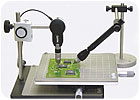
Several factors-advanced materials research, device miniaturization and nanotechnology-have contributed to the growing need for greater precision and versatility in microscopic imaging.
When selecting a microscope, consider the magnification, resolution, contrast, depth of field, field of view, illumination method, degree of automation and type of image produced. The three basic types: electron, confocal and compound microscopes, each offer distinct advantages for the operator.
Also, new products are continually introduced, such as the confocal laser scanning microscope, the scanning tunneling microscope, the atomic force microscope, and the video microscope. Thus, no matter what the application, there is no shortage of microscopes and imaging solutions available.
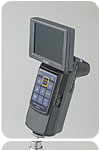
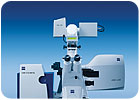
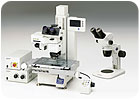
The two independent scanner groups provide flexibility in optical sample micromanipulation for FLIP or FRAP applications or when utilizing photoactivateable and photoconvertible variants of fluorescent proteins. Dynamic processes up to the kilohertz range occur using the system's fast acquisition capabilities. Meanwhile, multiple META channels make time-saving, specimen-preserving spectral imaging possible. The LSM 5 DUO is well-suited to a wide range of live cell imaging applications, allowing researchers to probe deeper into the cell's molecular processes. Developmental studies can be carried out at high speed and in 3-D resolution, even with low-magnification lenses. Physiological measurements can be perfectly matched to biological timescales or spectral properties. The META detector enables fluorochromes with high overlapping emission spectra to be precisely separated using its emission fingerprinting technology. Photomanipulation experiments involving pixel-precise laser irradiation, such as FRAP, FLIP, FLAP, photo-activation or conversion and uncaging, can be conducted at high-resolution timescales. Fast 4-D image acquisition enables dynamic structures to be monitored simultaneously.
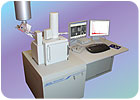
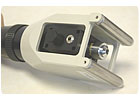
New electron optics enhance both general purpose imaging as well as analysis at the nanoscale. The new JSM-6390/6490 series comprises five models, offering a choice of low-vacuum operation, three stage sizes for specimens up to 12 inches in size, and goniometer stage axis control. In addition, JEOL USA offers a range of specially designed sample holders for its U.S. customers. JEOL offers a line of electron microscopes, including field emission SEMs, transmission electron microscopes (TEMs), and several new instruments designed for sample preparation, including an argon beam cross section polisher and a new single-column focused ion beam system.
Surface inspection of circular objects can be problematic because of the difficulty of keeping the optical microscope stable.

